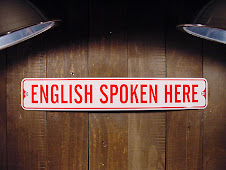these days we have been working in class with surface area and volume of some geometric shapes. I leave you here some links to go over the most important ones: Platonic solids (tetrahedron, cube, octahedron, dodecahedron, icosahedron), Pyramid, Prism, Cylinder, cone and sphere.
Remember that you have to present by the end of this week your work including:
1. Name of your shape.
 2. Description.
2. Description.3. Picture.
4. Net (See website to get some ideas).
5. Surface area and volume.
6. Examples in real life.
(Deadline: friday, 30th of november)
If you want to practice or get some ideas or pictures, you can find more exercises here:
- Surface area of a cube, rectangular prism, pyramids and cones, cylinder, cylinder and prism,
- Volume of a cube, rectangular prism, prism and cylinder, triangular prism, cone, pyramid and cone, cylinder, pyramid, sphere.
- Volume and surface area of sphere
And here I post as well the summary I promised... Download file.
Take care,
ALICIA






